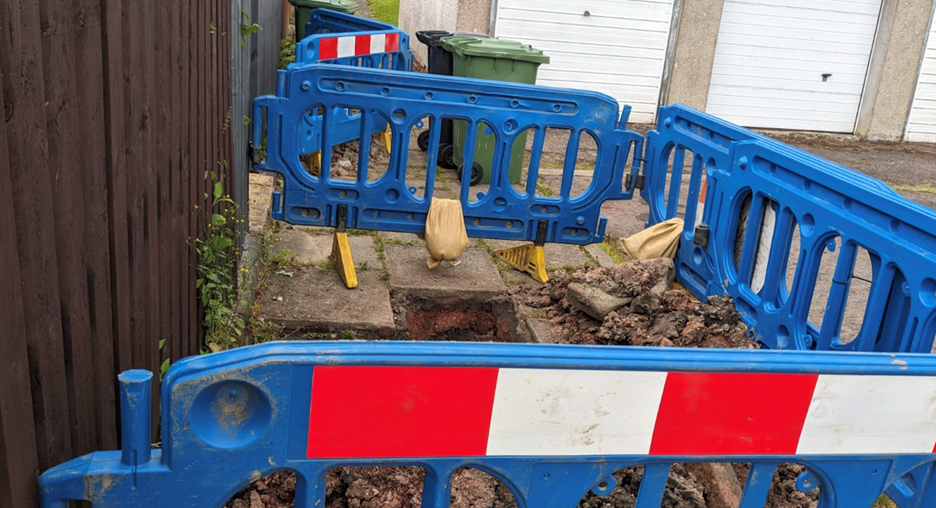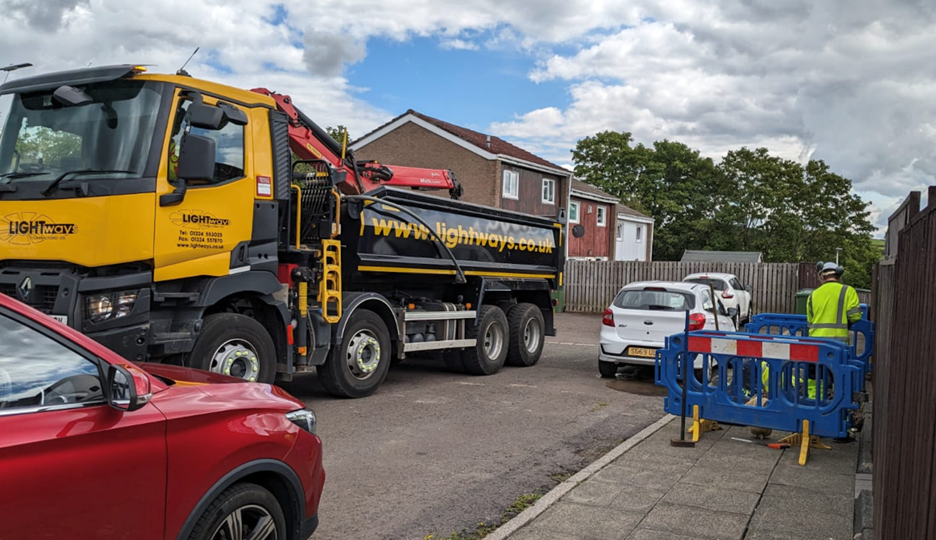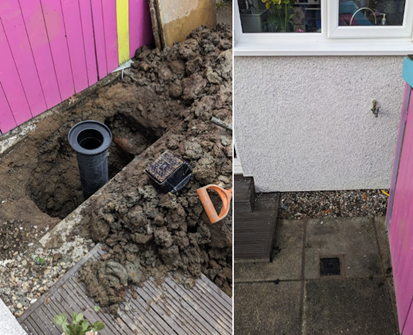My masculinity isn’t as toxic as it used to be. The LD50 has increased with age and proximity to wisdom, but one of the remnants of the former me is a desperate need to at least pretend I know what assorted tradespersons are referring to when they talk to me.
“Where’s your Toby?” asked the kitchen fitter. “I don’t know” was my partially honest reply. I’m pretty sure that he wasn’t enquiring as to the whereabouts of the nearest carvery, so the fact that I didn’t know what a Toby was meant that I couldn’t possibly know its location. Awkwardness avoided. Partially. Some discreet Googling told me that
A toby is the water shut-off valve, generally located at the boundary of your property, that sits between the council water main and your private water pipe.
Cue an aimless and ultimately fruitless meander around the front and back of my house to try to locate it.
Toby or not Toby
Considering the age of my plumbing, the kitchen fitter had recommended a new stopcock (insert your own punchline). This meant I was tasked with contacting Scottish Water to see if they could shed some light on the location of my elusive valve.
A phone call to Scottish Water only confirmed that due to the age of my house (similar to me, approximately 50 years) they didn’t have accurate records of where the Toby might be located, and they’d have to send out an operative to try to locate it.
The first engineer to arrive spent a good forty minutes looking around the front and back of the house, and along the street. In terms of technology there was a classic metal detector, but also what appeared to be an electromagnetic detector. Sadly, they were unable to hit the mark, and as he was leaving, I joked “Maybe bring your dowsing rods with you next time”. Strangely, instead of a laugh he informed me that he didn’t have his with him today. I kept my poker face on because it’s not wise to antagonise the people who will determine whether the installation of a kitchen you’ve already paid for will actually happen or not. He marks a couple of points on the path outside that may have potential and heads off with the promise that the digging team should be out within the next week.
Rod Steward
For the blissfully unaware, dowsing is an old, and highly discredited method of attempting to find water, oil, and other valuables using sticks, metal rods, and other such inert ‘devices’. They are generally understood to be ‘working’ as a result of the ideomotor effect, similar to Oiuja Boards. Amongst the most notorious use of such devices was for ‘bomb detectors’, as was covered by Meirion Jones at QED in 2016.


Divining Intervention
Two fruitless digs later and we’re still at square one, with nothing found. Another phone call to Scottish Water and they send out engineer number two. He’s polite, eloquent, and clearly energised by the conundrum he’s been met with. He talks at length about the historical lack of detailed data about pipe location, the shortcuts that have been taken to serve multiple houses with single valves, but he at least knows the location of the main pipe that serves the street (put a pin in that), so he’s confident he’s closing in on the target.

The confidence wanes somewhat after a half hour of fruitless searching. I wade back in with my dowsing rods joke just in case engineer number one was an anomaly. Sadly not. Engineer number two heads back to his van and returns with his dowsing rods. They look very familiar to me, because I’ve got my own set which we at Glasgow Skeptics use to demonstrate to the public how they don’t work (under controlled conditions).
Engineer number two then proceeds to demonstrate the dowsing rods to me. He’s not quite sure how they work, but they “definitely do”. To prove his case, he shows me the rods clearly moving and crossing over as he walks up to directly above the main pipe serving my neighbourhood (ok, this is where you take the pin out). My poker face slipped somewhat at this point, but my teeth remained firmly clamped on my tongue.
Pipe Dreams
It’s hard to put into words the highs and lows that came to pass in the next three unsuccessful visits. A Toby was found in a garden a few doors down (using good old human eyeballs), but it only fed the first four houses on the street (mine is house number six). Another Toby was found a few doors up (also leveraging the power of vision), but it had been blocked by some concrete poured for a fence post. A dig team was dispatched the following week to put a new valve in close by, after which we found it fed houses eight to twelve on the street, leaving me and my next-door neighbour high and far from dry.

The final roll of the technological dice from engineer number two was to have me run my taps at full pressure and use sound detection equipment to try and find out the path of water from the main pipe towards my garden. This unfortunately failed, which meant that a desperate last resort had to be taken: a dig team had to lift slabs in my garden just outside the kitchen window, then dig by hand to get to the pipe running to my house. The excavator could not be used, so it took a significant manual effort working through some particularly unpleasant soil to get to the pipe. Once that was located, they fitted a valve.
It’s worthwhile pointing out that the (real) technology that the engineers had at their disposal failed to do the trick, but it was for valid reasons: pipes can be made of differing materials, they can be too deep for detection, soil types have an effect, and of course it’s pretty common for enthusiastic councils or homeowners to cover over valves. All along the way the dowsing rods that “definitely work” proved to be useless.
Repetitive Drain Injury
This is not the first time that Scottish Water, and other water companies across the UK have been taken to task for their continued use of pseudoscientific methods. Back in 2017, Science Communicator Dr Sally Le Page contacted a number of companies to enquire as to their use of dowsing rods. The result was disappointing to say the least. Scottish Water confirmed by Twitter that dowsing rods were used, but later poured some cold water on that confirmation, presumably after being doused with understandably negative publicity.
I messaged engineer number two after all the work was done to thank him for everything he had done, but also revealed my connection to the skeptical community and offered to put his dowsing skills to a controlled test. I received no response.
I therefore decided to reach out to Scottish Water’s media team, and got the following statement:
Scottish Water does not support or encourage the use of dowsing and provides its employees with equipment and training to ensure they use methods for finding underground assets and leaks which are scientifically tried and tested. These include ground microphones, correlators and metal detectors and other devices to pinpoint the exact location of underground assets and leaks. Scottish Water does not budget for or spend money on any form of divination or dowsing tools and training.
Very occasionally, an operative may use rods if they feel it would help locate a leak. But this is not an officially-sanctioned method and it is down to individuals.
Water Re:tension
I thanked Scottish Water for their response, and for the hard work and dedication of the team to resolve my problem. Everybody I dealt with was polite, professional, and understanding of my problem. Even though it wasn’t an emergency they were aware I was on a timeline. They used state of the art equipment, leveraged all of their experience and expertise, and moved metaphorical mountains of soil with multiple digs. With a logical process of elimination and investigation they did the best they could with an incredibly difficult situation. I just wish they didn’t muddy the Scottish water by giving any kind of credence to such a clearly nonsensical practice.



